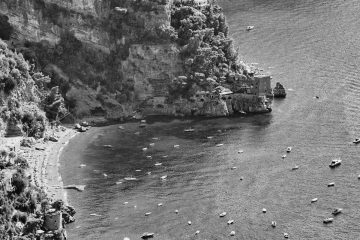What Happened On October 22nd?
On October 22, 1797, Parisians gathered at the Parc Monceau to witness a daring feat that had never been attempted before. André-Jacques Garnerin, a celebrated balloonist, prepared to leap from a hydrogen balloon at an altitude of 3,200 feet using a parachute he had designed himself. As the balloon lifted him higher into the sky, the crowd below watched in anticipation, knowing that this jump could change everything they understood about flight and gravity.
When Garnerin reached his target altitude, he made the critical move—he cut the cord connecting his parachute to the balloon. Instantly, he dropped into freefall, and the crowd held its breath. The silk parachute unfolded above him, catching the air, but the descent was anything but smooth. The parachute lacked a vent to control airflow, so it swayed violently as Garnerin was tossed from side to side. The crowd watched in stunned silence, fearful that the erratic swinging might result in a fatal outcome. However, Garnerin remained composed despite the intense motion.
As the parachute slowed his fall, Garnerin’s rapid plunge turned into a controlled descent. His basket struck the ground with a hard thud, but he emerged unharmed. The spectators erupted into applause, realizing they had just witnessed something extraordinary. Garnerin had proven that a human could safely descend from the sky using a parachute.
Garnerin’s jump was due to the culmination of years of work and planning. His interest in parachutes developed while he was a prisoner of war in Britain during the French Revolutionary Wars. In captivity, Garnerin imagined a device that could safely return people to the ground from great heights, especially in emergency situations involving aerial transport. After his release, he began building and testing his designs, determined to show that humans could master both ascent and descent. His public demonstration in 1797 was the first time he had put these ideas into action before an audience.
Garnerin’s parachute measured 23 feet in diameter and was crafted from durable silk. The choice of silk was crucial because it provided the necessary combination of light weight and strength. However, the design lacked many features that modern parachutes now have, such as a vent at the top to stabilize the fall. This absence caused the parachute to oscillate wildly during the descent, making Garnerin’s fall appear chaotic. Despite this, the parachute fulfilled its primary function: it slowed his descent enough to allow for a safe landing, even though the ride was rough. Garnerin’s understanding of aerodynamics, though limited by the technology of the era, still allowed him to achieve something truly revolutionary.
Garnerin’s accomplishment did not stop with that single jump. After proving that his parachute worked, he set out to refine his design and perform similar feats across Europe. He traveled to major cities like London and Moscow, where large crowds gathered to witness his jumps. His success was not limited to entertainment—Garnerin believed strongly in the practical uses of parachuting. He argued that parachutes could be used in military operations, especially for emergency escapes from balloons or other aircraft. Garnerin’s relentless drive to improve his designs led to greater stability and control in later versions of his parachute.
In 1799, Garnerin trained his wife, Jeanne Geneviève Labrosse, in the art of parachuting. Labrosse became the first woman to parachute from a significant height when she jumped from 900 meters, further showcasing the reliability of Garnerin’s invention. Labrosse’s leap was significant not only for aviation but also for women in the field of flight, as few women had been involved in such risky public demonstrations at the time. Labrosse continued to work closely with Garnerin, joining him in numerous exhibitions and helping to promote the practical benefits of parachuting to audiences across Europe.
Garnerin’s contributions to flight did not end with his personal achievements. His work inspired engineers and inventors across Europe to continue developing parachutes. The wild swings Garnerin experienced during his initial jump revealed the need for more stability in the design. In response, engineers began adding vents to the top of parachutes, which allowed air to escape and provided more control during descent. These improvements transformed parachutes from unstable novelty devices into reliable tools, which would become essential in aviation, military, and emergency applications. Garnerin’s pioneering jump opened the door for these later advancements, proving that controlled descent from high altitudes was both possible and practical.
The timing of Garnerin’s success coincided with a period of intense scientific interest and innovation in France. Following the French Revolution, the nation embraced new ideas and celebrated technological breakthroughs. Garnerin’s parachute jumps embodied this spirit of progress, representing not only a leap in aviation but also a symbol of human ingenuity. His demonstrations captivated the public and helped usher in a new era of exploration and curiosity about flight.
As Garnerin continued to refine his parachute design, he also advanced other aspects of ballooning and flight. He worked on improving high-altitude balloon safety and explored ways to make balloon travel more efficient. Although his parachute jump in Paris was his most famous achievement, Garnerin made lasting contributions to the field of aeronautics, influencing the development of flight technology for generations to come.





